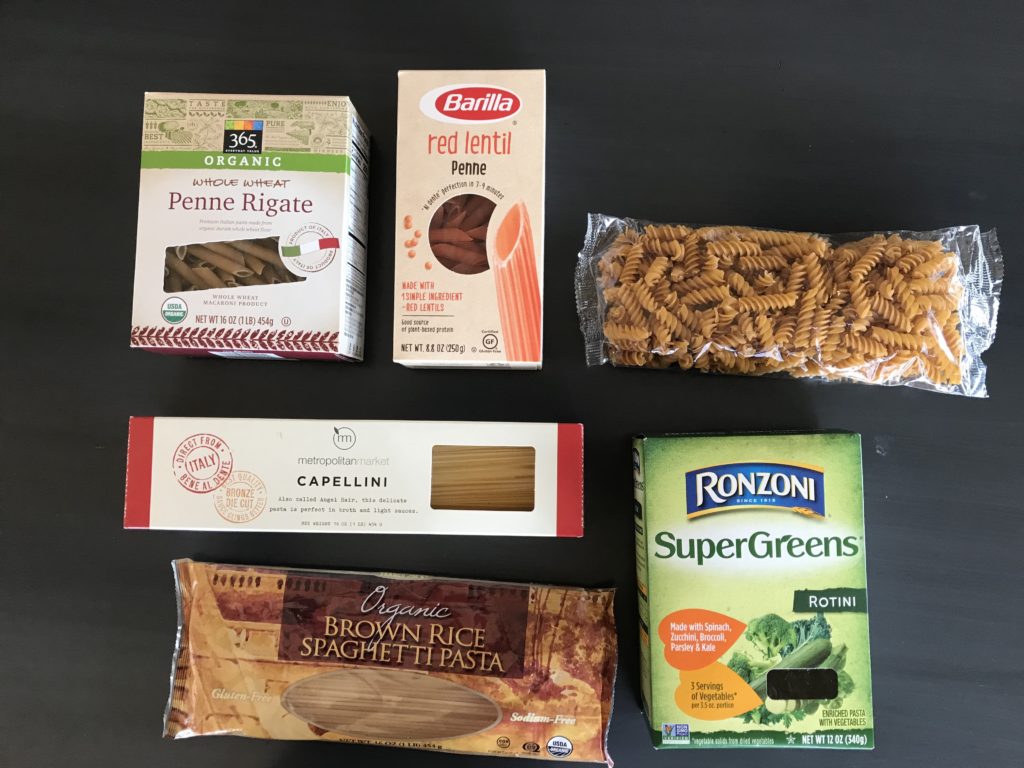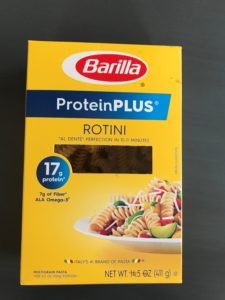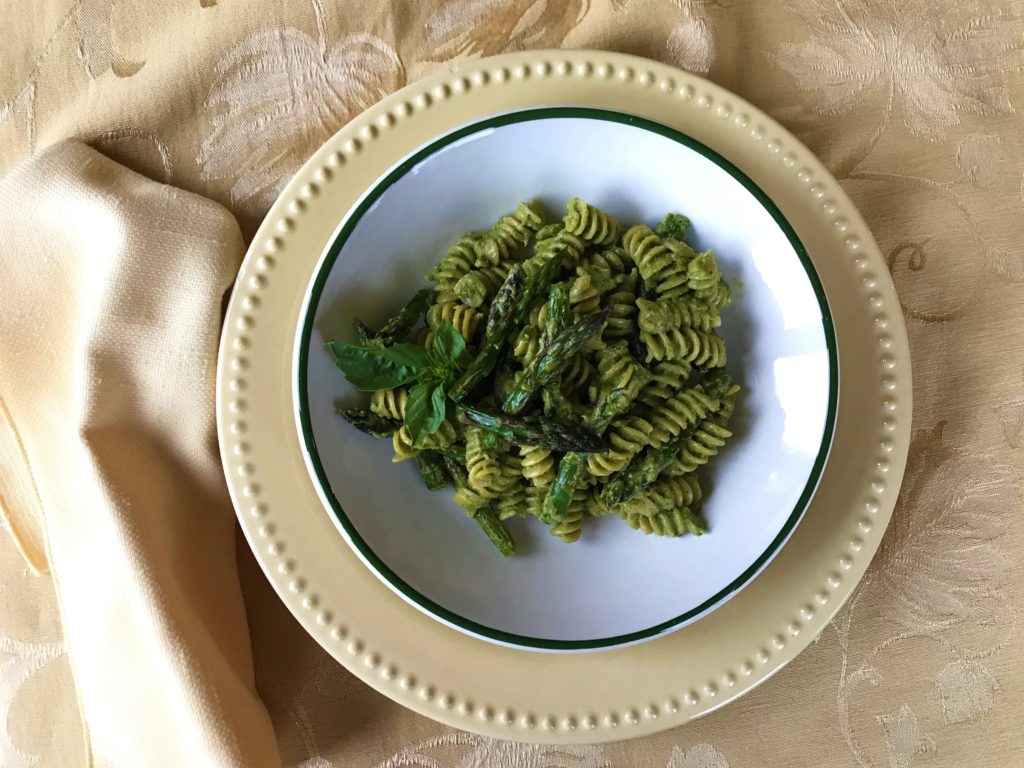Asparagus-Basil Pesto

Move over wheat – the action in the pasta world is with “alternatives” made from vegetables, legumes, quinoa and grains like rice and corn.
These alternative pastas are only about 2% of the pasta category, but their growth is remarkable, up 19% annually. Compare that to traditional wheat pasta, a “low growth” category, up only 0.2% annually (1).
What’s the appeal? Health and wellness goals to eat more protein, more vegetables, fewer carbs and less or no wheat. People are cranking spiralizers to make zoodles, sweet potato and beet noodles or grabbing ready-to-go ones in the produce or freezer department.
“Alternative” dry pastas aim to mimic wheat pasta in shape, texture and taste. Some do so better than others. The type of sauce used, and your tolerance for variance in pasta attributes factor into the experience.
Some bean pastas taste “beany.” My test of black bean spirals was a disaster. The red color of some lentil pastas can be a pro or con – depending on the sauce. After much experimenting, my son figured out how to cook and sauce brown rice spaghetti.
Lentil- and chickpea-based pastas are an excellent source of both protein and fiber. They come in short shapes like elbows, penne and spirals. I’ve had good results with Modern Table’s “complete protein” pasta made with lentils, rice and peas. (Not pictured as we ate it all!) And, I like the chickpea corkscrews in my photo by Banza.

I’ve used Barillia’s Protein Plus pasta for years. It includes wheat and other grains but pumps up the protein and nutrients with egg white, flaxseed and legume flour. I still reach for traditional Italian semolina pasta for some sauces and enjoy whole wheat pasta for robust ones.
The very green SuperGreens pasta by Ronzoni claims, “3 servings of vegetables per 3.5-ounce portion.” It’s enriched semolina with dried spinach, zucchini, broccoli, parsley and kale. If you’re like green pasta, try it, but don’t consider it a substitute for fresh veggies.

Asparagus is a true symbol of spring. While it’s still available, there’s nothing better to toss with pasta than this Asparagus-Basil Pesto. While you’re at it, why not try it with a new pasta?
Asparagus-Basil Pesto
Serves 4 to 6.
Pan-roast the garlic to tame its sharp bite (step 1) if you like. Toss the pesto with pasta or serve as a spread on toast with a poached egg or a slab of cheese. Pecorino is a zesty sheep-milk cheese– Parmesan will be milder. You can also roast the asparagus tips instead of blanching them with the pasta.
1-2 cloves garlic
1 ½ pounds fresh asparagus spears (stems about 1/3-inch thick)
1 cup packed fresh basil leaves
1/3 cup pine nuts or roasted, salted pistachios
1/3 cup finely shredded, lightly packed pecorino-Romano or parmesan cheese
1 teaspoon fresh lemon zest
¾ teaspoon kosher salt, more to taste
1/3 cup extra virgin olive oil
2 tablespoons water, optional
8 to 10 ounces short pasta, preferably whole grain
For Topping:
Freshly shredded Asiago cheese
Roasted pine nuts or pistachios
1. To tame the garlic flavor (optional), place garlic cloves in a dry (or oiled nonstick) skillet over medium-low heat. Toast, turning several times, until light brown and slightly softened. Remove from heat and cool.
2. Trim tough ends of asparagus. Discard stem ends. Cut off tips (about 2 inches) and place in a small bowl near the stove to cook with pasta. Cut tender stems into 1-inch pieces. Set aside 1 ½ cups stem pieces for pesto. Add any remaining tender stem pieces to bowl with asparagus tips.
3. To make pesto, in food processor combine 1 ½ cups stem pieces, toasted garlic, basil, nuts, cheese, lemon zest and salt. Process until finely chopped, stopping to scrape down side of bowl once or twice. With motor running slowly add oil through feed tube and continue to process until smooth, again stopping to scrape side of bowl as needed. Thin with water, as needed. Taste and add additional salt if desired.
4. Boil pasta in a large pot of lightly salted water as package directs, adding reserved asparagus pieces during the last 1 1/2 minutes. Drain, reserving about ½ cup cooking water. Place in a large bowl and toss with pesto; thin with reserved water as needed. Serve with cheese and more nuts, if desired.
REFERENCE
- Retail Dietitians Business Alliance Webinar, From No to Go: The Evolution of Pasta and Its Consumer, Jan 8,2019. Speaker: David De Souza, General Manager of Consumer Foods, Basic American Foods.
© 2019 Lorelle Del Matto
 About lorelle
About lorelle
Speak Your Mind